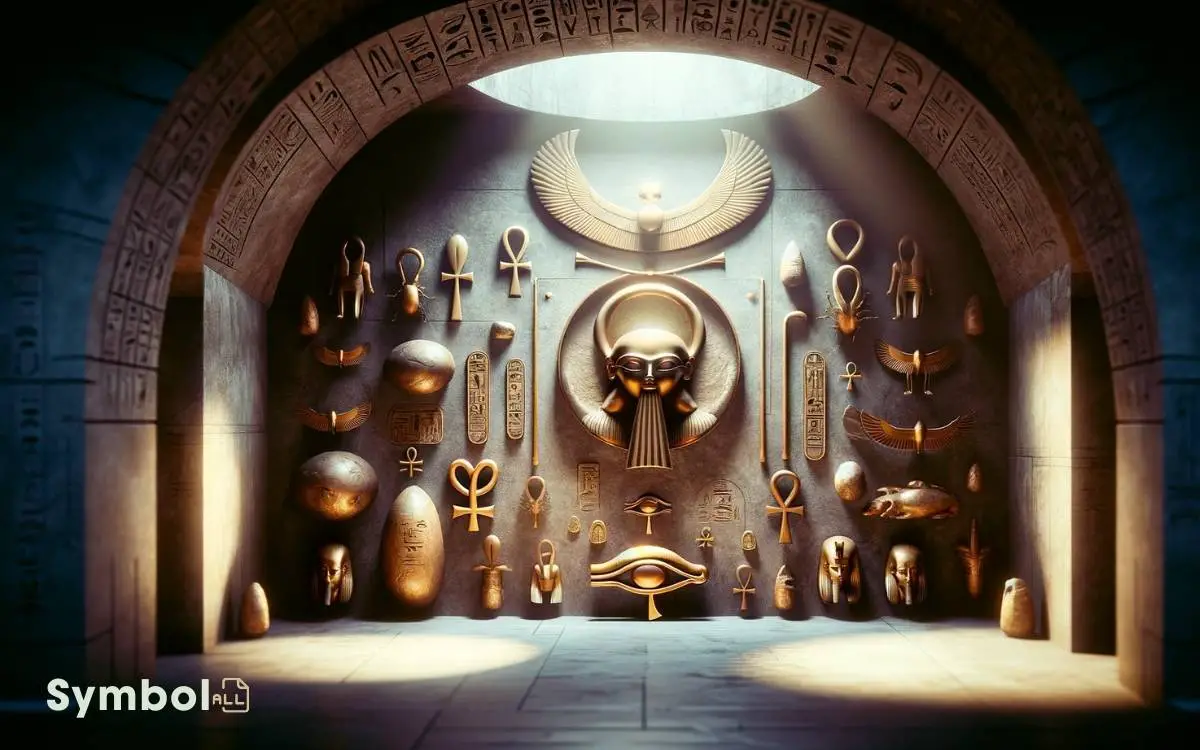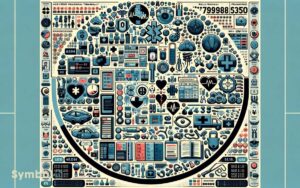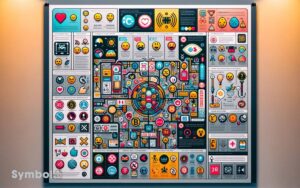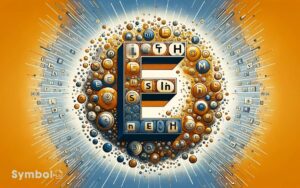What Items or Symbols Were Used to Decorate Tombs? Explains!
Throughout history, you’ll find that civilizations meticulously decorated their tombs with symbols and artifacts, each imbued with profound meanings. Ancient Egyptian tombs were etched with hieroglyphs, ensuring safe passage into the afterlife and reflecting their cosmology.
Similarly, the Chinese Terracotta Army, buried alongside the First Emperor, symbolized eternal command.
Viking burials with ships and treasures highlighted societal structures and beliefs about the afterlife. Medieval European effigies communicated one’s status through intricate symbolism.
These decorations, from Mayan jade artifacts to Greek funerary sculptures, reveal a civilization’s beliefs, societal norms, and their relationship with death and the afterlife, promising a deeper understanding of their worldviews.

Key Takeaways
Ancient Egyptian Hieroglyphs
Ancient Egyptian hieroglyphs, a complex system of writing that melds logographic and alphabetic elements, serve as a profound window into the spiritual and daily lives of the ancients, encoding their beliefs, rituals, and societal roles within the ornate decorations of tombs.
You’ll find that these symbols weren’t merely artistic flourishes; they were meticulously chosen to ensure the deceased’s safe passage into the afterlife.
Each hieroglyph had specific meanings, from invoking protection to detailing the accomplishments of the tomb’s inhabitant.
Scholars have deciphered these symbols, revealing a rich tapestry of Egyptian cosmology and theology.
Understanding hieroglyphs, you’ll gain insight into the intricate relationship between language, religion, and social hierarchy in ancient Egypt, showcasing how deeply intertwined written words and spiritual beliefs were in shaping their worldview.
Viking Burial Treasures
You’ll find that Viking burial treasures provide a profound insight into their societal structure and beliefs.
The significance of grave goods in these burials underscores a complex interplay between the material and spiritual realms, reflecting status, profession, and personal affiliations.
An exploration of ship burials further reveals the Vikings’ intricate relationship with the sea, serving not only as a method of transportation but also as a symbol of passage to the afterlife.
Grave Goods Significance
Viking burial treasures, known as grave goods, served not only as offerings for the deceased but also as symbols of their societal status and achievements in life.
You’ll find that these artifacts, ranging from weapons and jewelry to tools and personal items, were meticulously chosen to reflect the individual’s role and reputation within their community.
Scholars suggest that the inclusion of such items was deeply rooted in the Vikings’ beliefs about the afterlife, where the dead would need their possessions for the journey ahead or in the world beyond.
This practice also communicated the deceased’s wealth and rank to the living, reinforcing social hierarchies even in death.
Thus, grave goods played a multifaceted role, bridging the earthly existence with the spiritual, and perpetuating the memory and status of the departed.
Ship Burials Overview
Building on the understanding of grave goods and their significance in Viking funerary practices, ship burials stand out as a distinct and profound manifestation of these traditions, encapsulating the essence of the Viking journey into the afterlife.
These elaborate burials served not only as a final resting place but also as a vessel for the deceased’s voyage to the realm beyond.
You’ll find that archaeologists have unearthed ships laden with weapons, armor, and personal belongings, indicating the high status of the individual and their preparedness for the afterlife.
Moreover, these findings reveal meticulous attention to the deceased’s rank and achievements, with ship burials reserved for the elite. This practice underscores the Vikings’ belief in an afterlife where social status and valor continued to play pivotal roles.
Chinese Terracotta Army
The Chinese Terracotta Army is a formidable collection of over 8,000 soldiers, horses, and chariots. It serves as a monumental testament to the First Emperor of China, Qin Shi Huang‘s, quest for immortality and his unparalleled military power.
Each figure is meticulously crafted from terracotta, standing as an individual with distinct facial features and attire reflecting diverse roles within the ancient military hierarchy.
This army was buried alongside the emperor in 210–209 BCE, symbolizing his ability to command a vast military force in the afterlife.
The meticulous arrangement and detailed craftsmanship underscore the sophisticated artistry and the profound significance of the afterlife in Qin dynasty culture.
The awe-inspiring mausoleum illustrates the lengths to which ancient societies went to honor and protect their leaders in death. It blends artistic achievement with spiritual aspirations, showcasing the fusion of cultural values and artistic expression in ancient China.
Mayan Jade Artifacts
Much like the Terracotta Army of the Qin dynasty, Mayan civilization also placed immense value on the burial objects of the deceased, with jade artifacts representing their profound spiritual beliefs and societal status.
| Artifact Type | Symbolic Meaning | Societal Implication |
|---|---|---|
| Jade Masks | Connection to the divine | Elite status |
| Jade Pendants | Protection in the afterlife | Spiritual safeguard |
| Jade Beads | Cycle of life and rebirth | Continuity of lineage |
| Jade Plaques | Communion with ancestors | Ancestral veneration |
You’ll find that these jade pieces were not merely decorative. They served as potent symbols of power, spiritual protection, and a testament to the individual’s rank within the Mayan society.
The craftsmanship reflects a deeply ingrained belief in the afterlife and the importance of maintaining a connection with the spiritual realm.
Medieval European Effigies
You’ll find that Medieval European effigies serve as a rich repository of cultural and artistic expression, encapsulating the era’s aesthetic values and societal hierarchies.
The types of effigies, ranging from the regal to the religious, not only denote status but also convey intricate symbolism through their decor, offering insights into contemporary beliefs and ideologies.
Moreover, the materials and craftsmanship techniques employed reveal the technological advancements and artistic virtuosity of medieval artisans, marking a significant epoch in the evolution of sculptural art.
Types of Medieval Effigies
Within the medieval period, effigies served as a poignant visual representation of the deceased, meticulously crafted to convey status, profession, and piety. You’ll find they varied significantly, reflecting the social hierarchy and personal accomplishments.
Knights’ effigies often bore armor, symbolizing their martial prowess, while ecclesiastical figures were depicted in vestments, highlighting their spiritual roles.
Royalty and nobility’s effigies were particularly elaborate, adorned with regalia that emphasized their governance and influence. Artisans also depicted laypersons in attire reflecting their trade or societal position, offering a glimpse into the diverse fabric of medieval life.
Each type, from the simplest to the most ornate, was a testament to the individual’s identity and the values held by society during this period.
Symbolism in Effigy Decor
Every element of decor adorning medieval European effigies held profound symbolism, reflecting the deceased’s virtues, societal role, and spiritual beliefs. Intricate carvings, detailed inscriptions, and carefully chosen motifs were meticulously crafted to convey messages that transcended the constraints of time. Among the most common symbols in Flemish art, for example, were depictions of religious iconography, flora representing purity or resurrection, and heraldic devices signifying lineage and honor. These artistic choices served not only as tributes to the dead but also as a means of instructing the living on moral and spiritual ideals.
You’ll find that swords often accompany knights, symbolizing their valor and military service, while crowns or scepters with kings and queens denote authority and governance.
Religious figures might be depicted with attributes of their faith, such as a bishop with a crozier, signifying pastoral care and spiritual authority. Animals also carry rich meanings; a lion might represent courage and nobility, whereas a dog could symbolize loyalty.
Even the positioning of hands in prayer or the direction of gaze could communicate a soul’s readiness for the afterlife or eternal vigilance. Each choice in effigy decor serves as a window into the medieval world, offering insights into the complex interplay of identity, status, and belief.
Materials and Craftsmanship Techniques
The crafting of medieval European effigies involved a sophisticated array of materials and techniques, each selected to ensure durability, aesthetic appeal, and symbolic resonance.
Artisans meticulously chose substances and methods that not only stood the test of time but also conveyed the social status, virtues, and even the profession of the deceased.
- Stone and Marble: Selected for their permanence and ability to be finely sculpted.
- Metalwork: Bronze or brass was often used for monumental brasses, illustrating intricate details through casting and engraving.
- Polychromy: The application of color to stone or wood, enhancing realism and conveying symbolic meanings through color.
These materials and craftsmanship techniques reflect a deep understanding of artistry, symbolism, and the aspirations of medieval society to commemorate their dead with honor and sophistication.
Native American Totems
Exploring Native American totems reveals a complex web of spiritual, familial, and cultural significance deeply embedded in indigenous communities.
These totems, often carved from wood or stone, aren’t mere decorations but embody the lineage, identity, and beliefs of the tribes. They serve as a bridge between the earthly and the spiritual realms, marking sacred spaces and the final resting places of the departed.
Each figure or symbol on a totem narrates a part of a larger story, encapsulating ancestral tales, clan emblems, or spiritual guardians.
The meticulous craftsmanship reflects a profound reverence for the natural world and its inhabitants, illustrating a holistic worldview where every creature and element holds intrinsic value.
This integration of artistry and spirituality underscores the profound respect for the cycle of life and death within Native American cultures.
Greek Funerary Sculptures
Much like Native American totems, Greek funerary sculptures offer a window into the spiritual and social dimensions of ancient life, embodying the values, beliefs, and customs of their time.
These sculptures, ranging from modest markers to elaborate statues, weren’t merely decorative. They served as an enduring tribute to the deceased, linking them perpetually with the living world and the divine.
- Kouros and Kore statues represented idealized young men and women, symbolizing the beauty and virtue of the deceased.
- Relief sculptures depicted scenes from the life of the deceased, often showcasing their achievements or virtues.
- Stele markers, often elaborately carved, marked the grave and communicated the social status and identity of the deceased.
Through these sculptures, you glimpse the complexity of Greek attitudes towards death, memory, and the afterlife, revealing a culture deeply invested in the commemoration of the individual.
Conclusion
In your journey through the annals of history, you’ve uncovered a profound truth: across civilizations, the act of commemorating the dead transcends mere memory.
From the intricate hieroglyphs of ancient Egypt to the stoic warriors of China’s Terracotta Army, each artifact embodies a universal yearning to immortalize those who’ve passed.
These symbols, whether carved effigies or jade artifacts, serve not just as cultural markers but as tokens of humanity’s eternal quest to bridge the chasm between life and death, connecting us across the ages.





